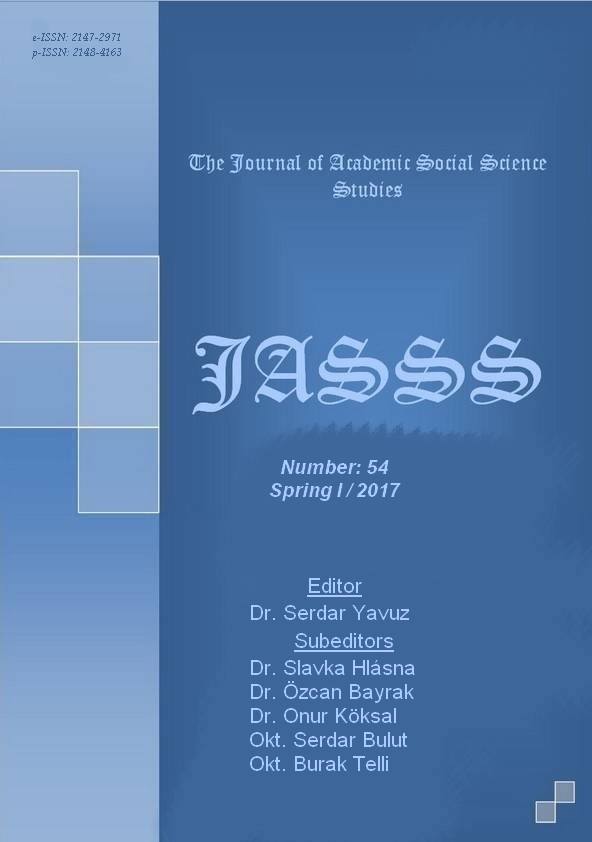ÖĞRETMENLERİN BİLGİ UÇURMA DAVRANIŞLARI VE BİLGİ UÇURMA NEDENLERİ İLE BİREYSEL DEĞERLERİ ARASINDAKİ İLİŞKİ
Author :
Abstract
Bu araştırmada amaç, ilkokul ve ortaokullarda çalışan öğretmenlerin karşılaştıkları olası etik ve yasa dışı uygulamaları ifşa etme düzeyleri, bu etik dışı uygulamalara karşı gösterdikleri tepkilerin nedenlerinin neler olduğu ve bilgi uçurma davranışları ve bilgi uçurma nedenleri ile bireysel değerleri arasındaki ilişkiyi belirleyerek bu doğrultuda uygulayıcılara ve araştırmacılara önerilerde bulunup durumu ortaya koymaktır. Betimsel tarama modelinde olan araştırma, Sakarya ili Adapazarı ilçesindeki ilkokul ve ortaokullarda çalışan basit tesadüfi örnekleme yöntemiyle belirlenen 366 öğretmen ile yürütülmüştür. Verilerin toplanmasında araç olarak “Bilgi Uçurma Ölçeği”, “Bilgi Uçurma Nedenleri Ölçeği” ile “Bireysel Değerler Ölçeği” kullanılmıştır. Elde edilen bulgularda, öğretmenlerin bilgi uçurma görüşlerinde en yüksek ortalama katılıyorum düzeyi ile içsel bilgi uçurma boyutuyken; en düşük ortalama kararsızım düzeyi ile dışsal bilgi uçurma boyutudur. Bilgi uçurma nedenlerine yönelik öğretmen görüşlerinde en yüksek ortalamanın katılıyorum düzeyinde örgütsel yarar ile ahlaki ve mesleki değerler boyutlarında olduğu görülmektedir. Öğretmenlerin benimsediği değerlerin başında adalet duygusu geldiği, en az benimsedikleri değerin de sadakat olduğu görülmektedir. Kadın öğretmenlerin bilgi uçurmaya ve bireysel değerlere yönelik görüşlerinin, erkek öğretmenlerden daha yüksek olduğu görülmektedir. İçsel bilgi uçurma boyutunda ortaokulda görev yapan öğretmenlerin lehine anlamlı farklılık vardır. Dışsal bilgi uçurma boyutunda lisans mezunu öğretmenlerin; bireysel değerlere ilişkin ise lisansüstü mezunu öğretmenlerin lehine anlamlı farklılık görülmektedir. Mesleki kıdeme göre öğretmenlerin bilgi uçurma, bilgi uçurma nedenleri ve bireysel değerleri düzeylerinde anlamlı fark ortaya çıkmamıştır. Öğretmenlerin bilgi uçurmaya, bilgi uçurma nedenlerine ve bireysel değerlere yönelik görüşleri incelendiğinde alt boyutlarda ve toplam ölçeklerde genellikle düşük düzeyde pozitif yönde çeşitli ilişkiler olduğu görülmektedir.
Keywords
Abstract
The objective of this study is to determine disclosure levels of teachers working at primary and secondary schools against unethical and illegal acts they have encountered, the reasons behind their responses to such unethical acts as well as the relationship between whistleblowing behaviors and reasons and their personal values and to put forward suggestions for practitioners and researches that shall reveal the issue. Within the scope of the study conducted in descriptive survey model, 366 primary and secondary school teachers, selected through simple random sampling, working in Adapazarı district of Sakarya have been interviewed. The data have been collected through “Whistleblowing Scale”, “Reasons for Whistleblowing Scale” and “Personal Values Scale”. The findings of the study reveal that internal whistleblowing dimension has received the highest score with “I completely agree.” level from teachers while the lowest score has been obtained in external whistleblowing with “I am not sure.” level. Considering the reasons for whistleblowing, the highest score has been received in organizational profit and occupational values dimensions with “I agree.” level. The value of justice ranks the first among the values that the teachers have internalized while the least internalized value is loyalty. Female teachers hold higher levels of insights regarding whistleblowing and personal values compared to male teachers. A meaningful difference has been observed in internal whistleblowing dimension for the benefit of secondary school teachers. In external whistleblowing dimension a meaningful difference has been observed for the benefit of teachers with undergraduate degree while teachers with graduate degree hold a meaningful difference in personal values dimension. There is no meaningful difference among whistleblowing, reasons for whistleblowing and personal values of teachers based on their professional seniority. Considering the insights of the teachers regarding whistleblowing, reasons for whistleblowing and personal values, low levels of positive correlations have been observed in low dimensions and total scales.





